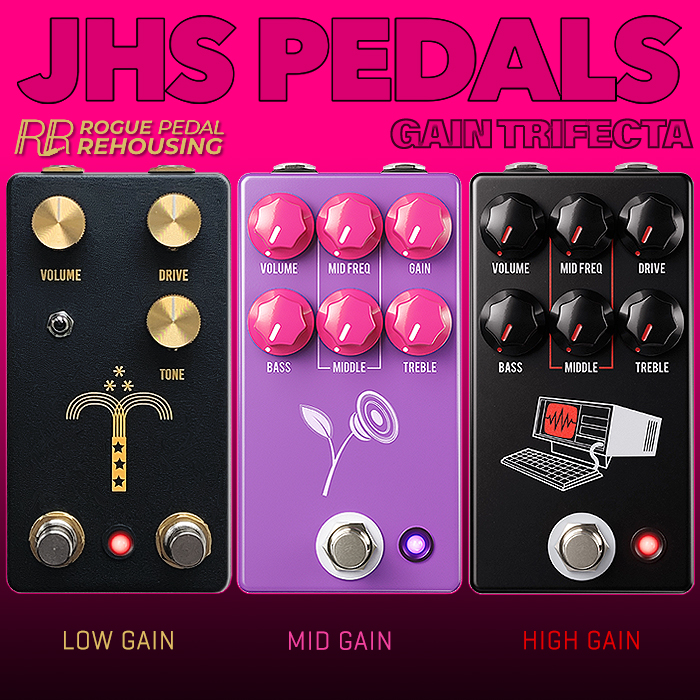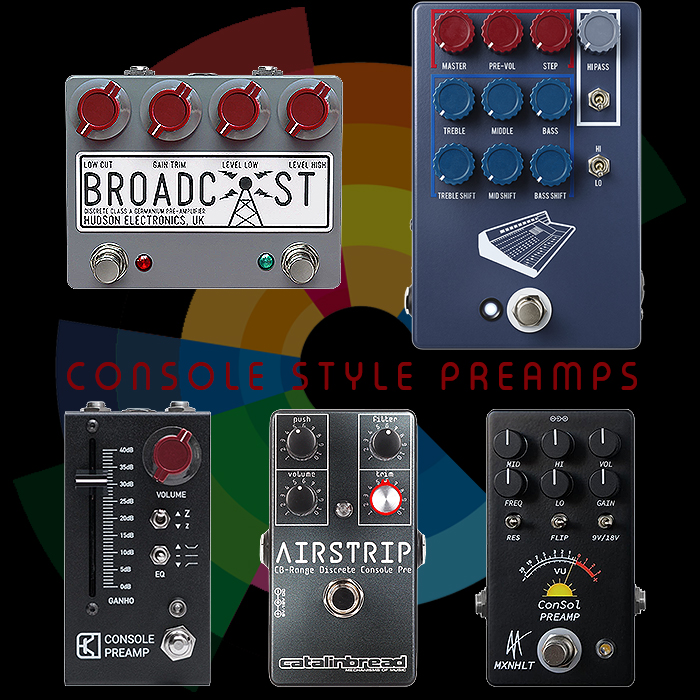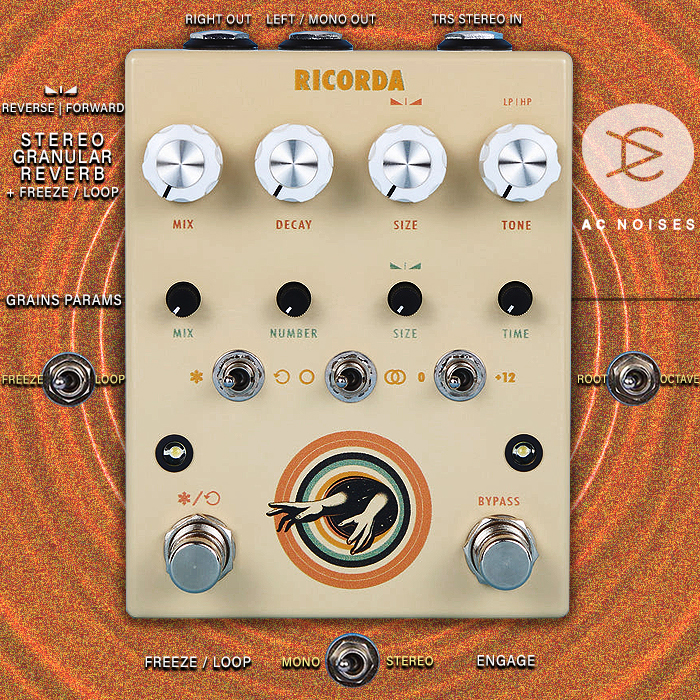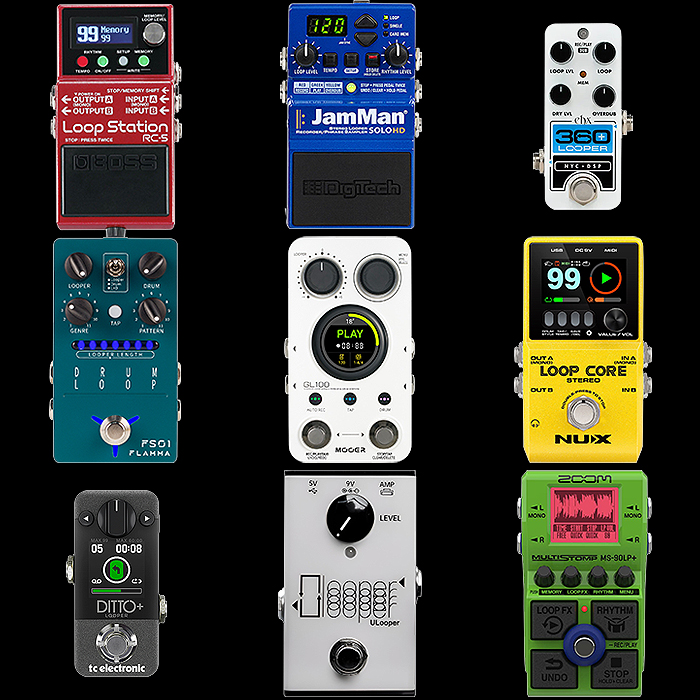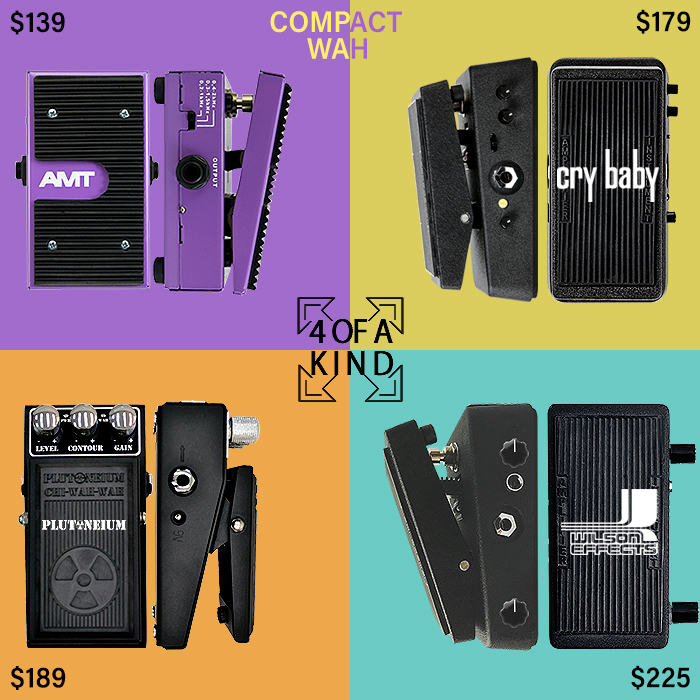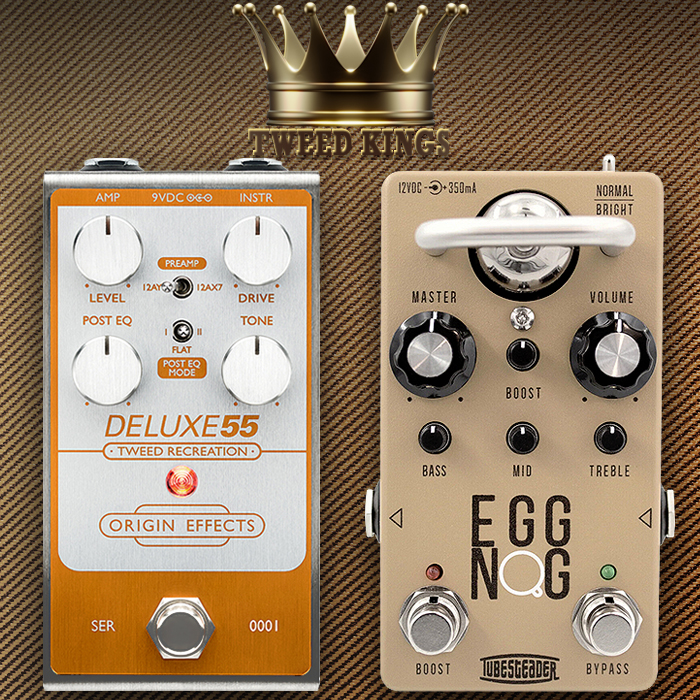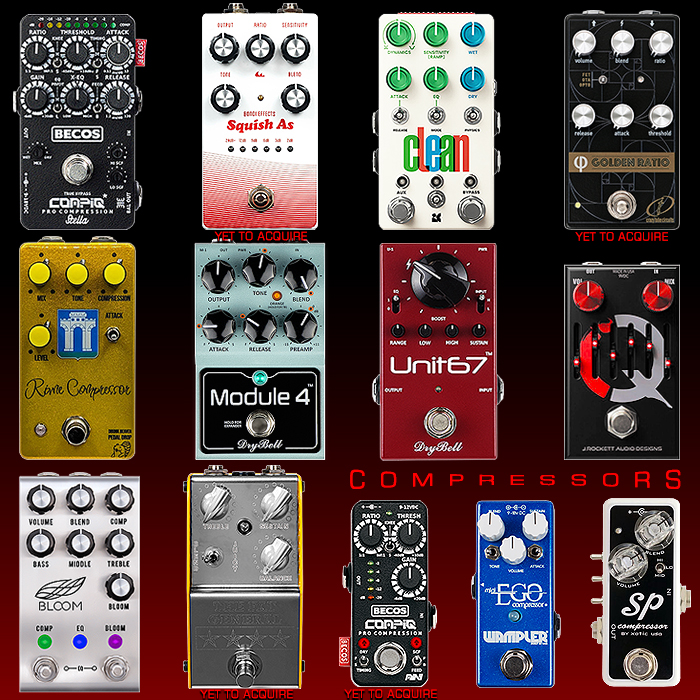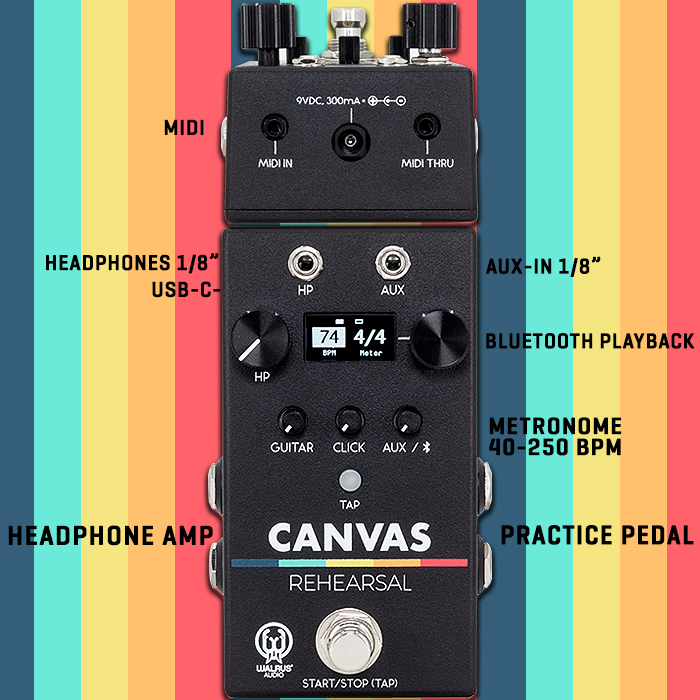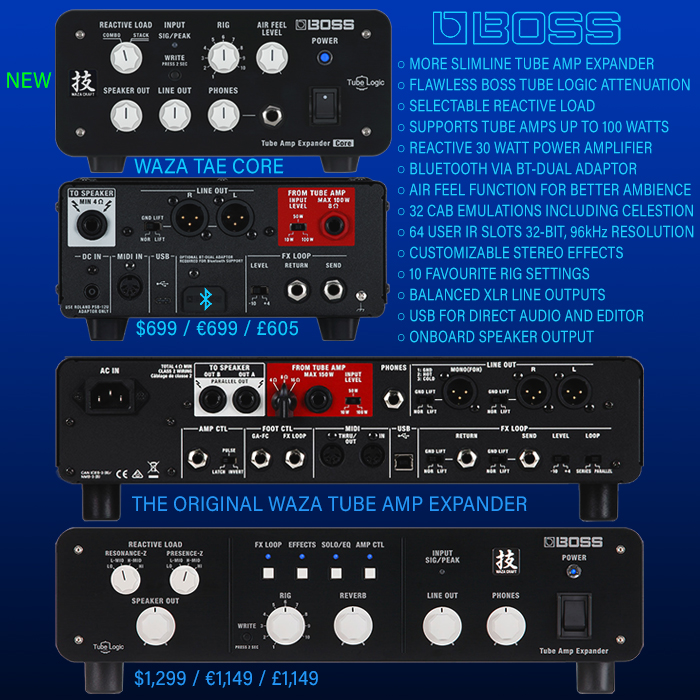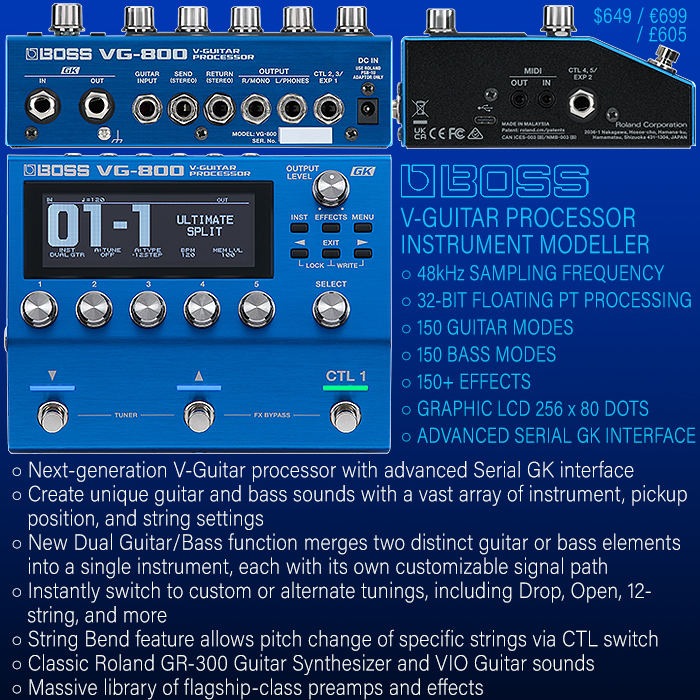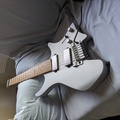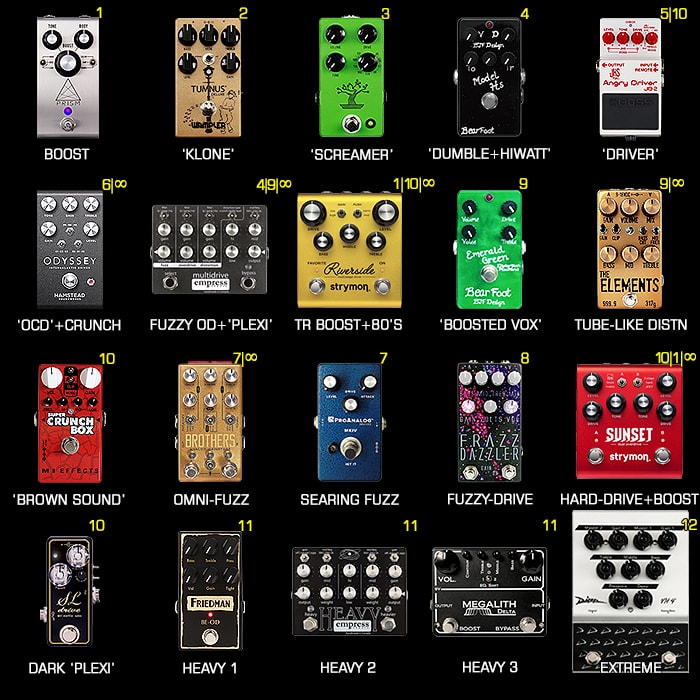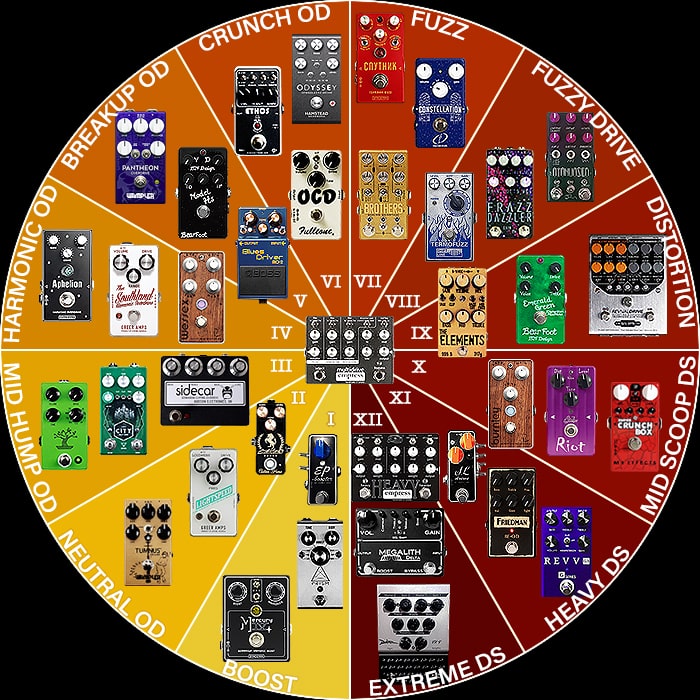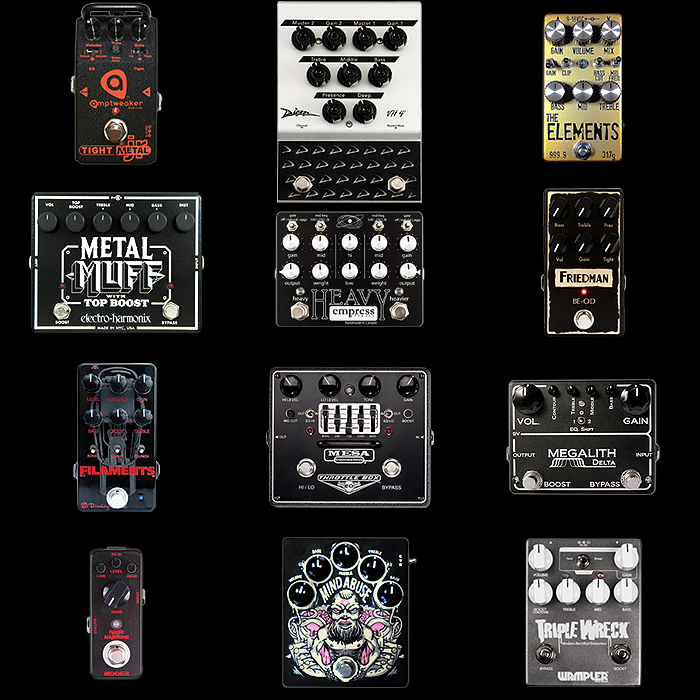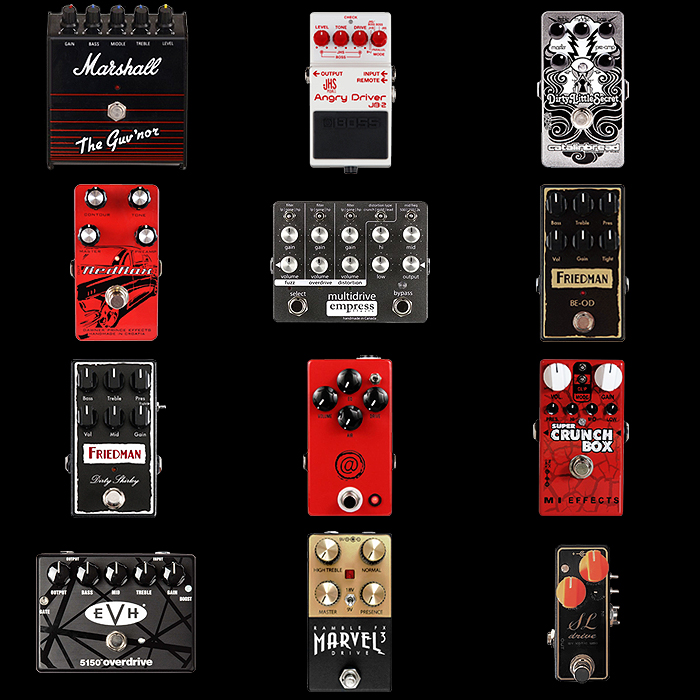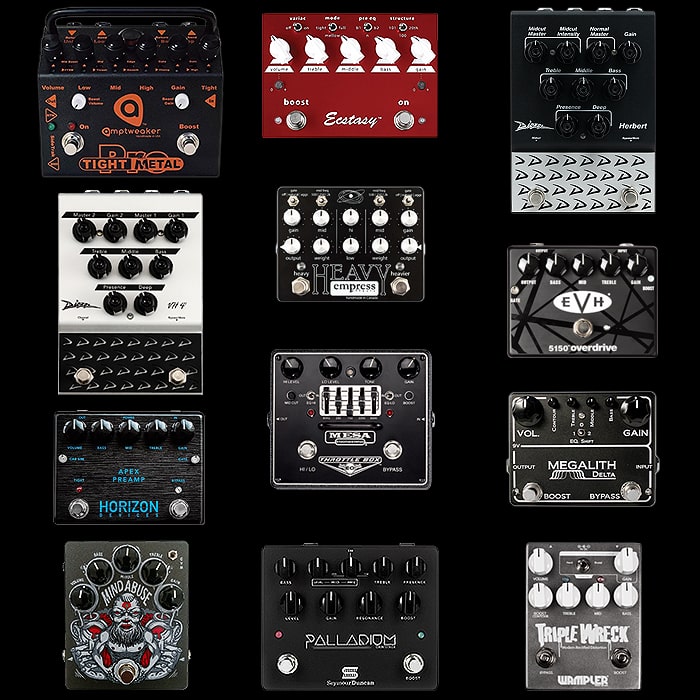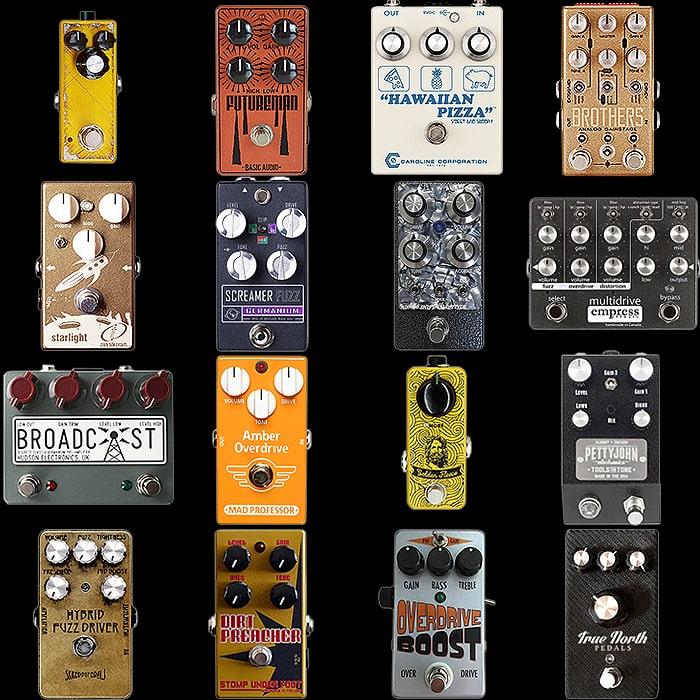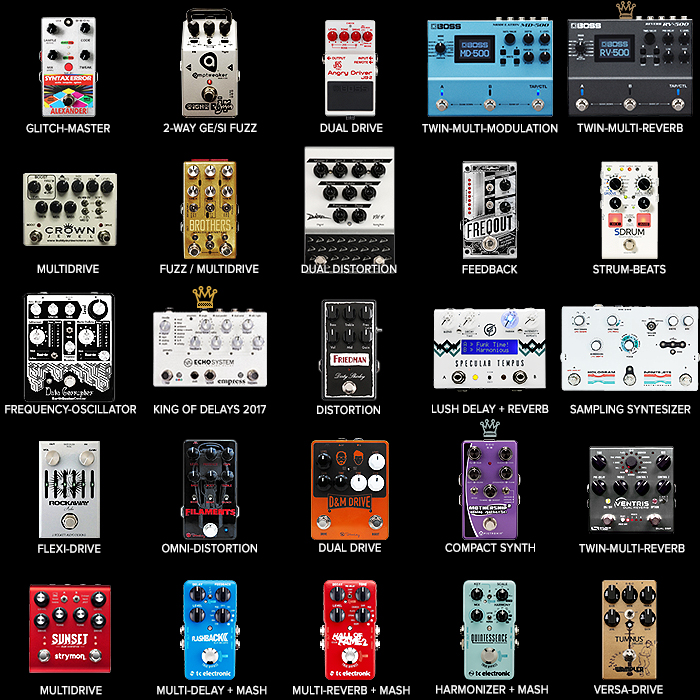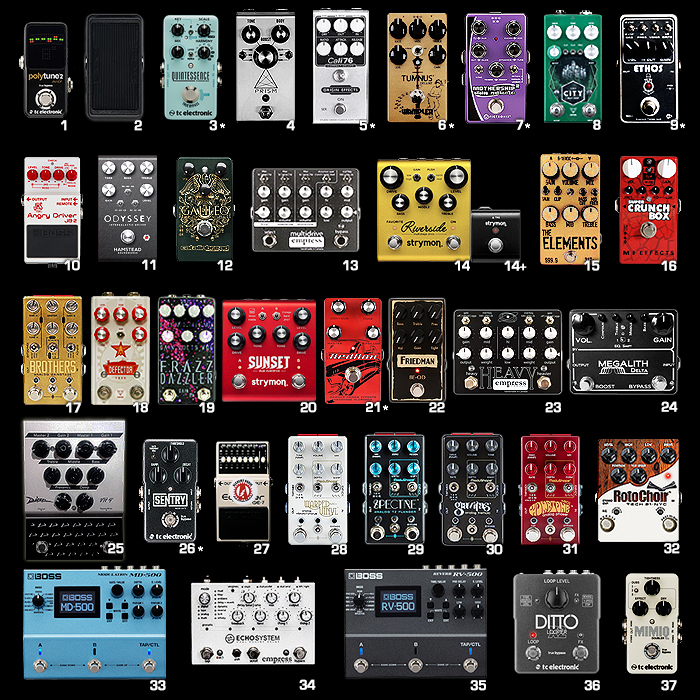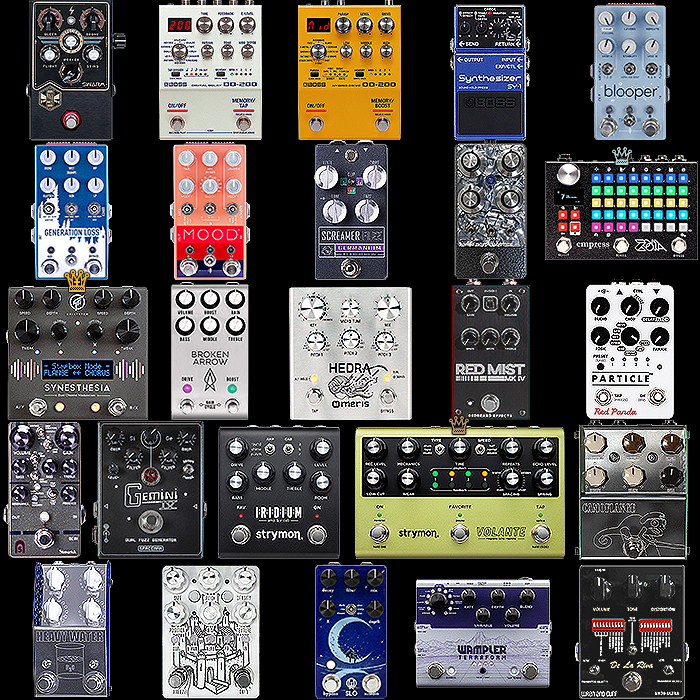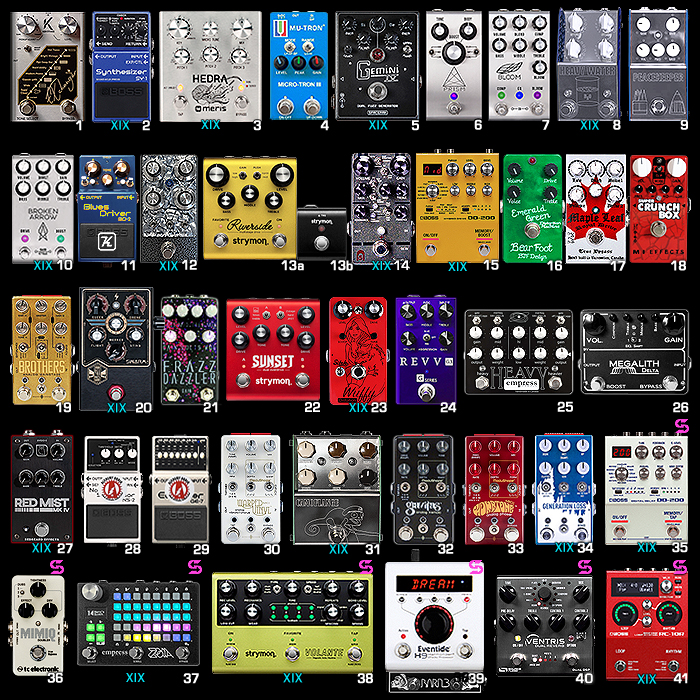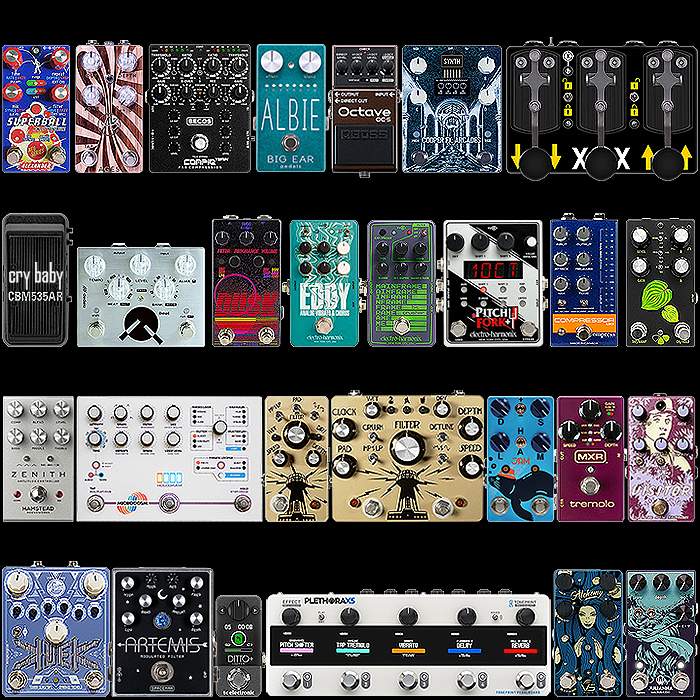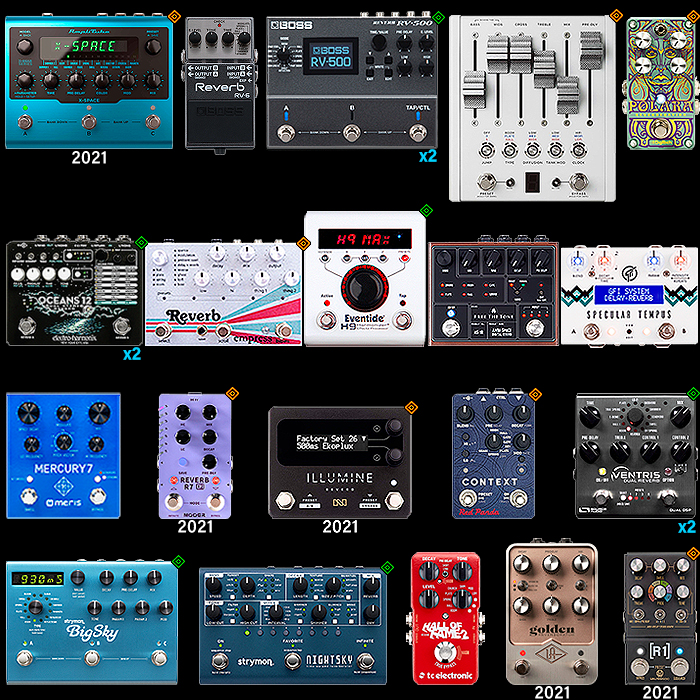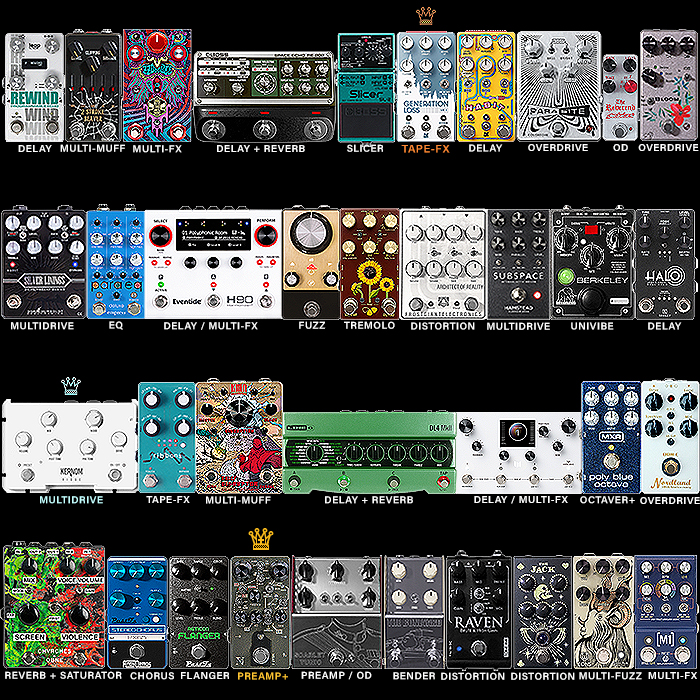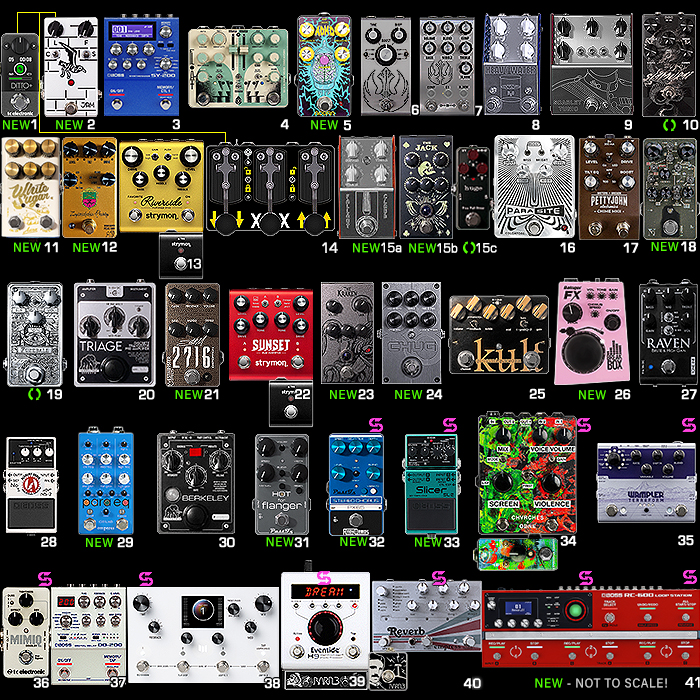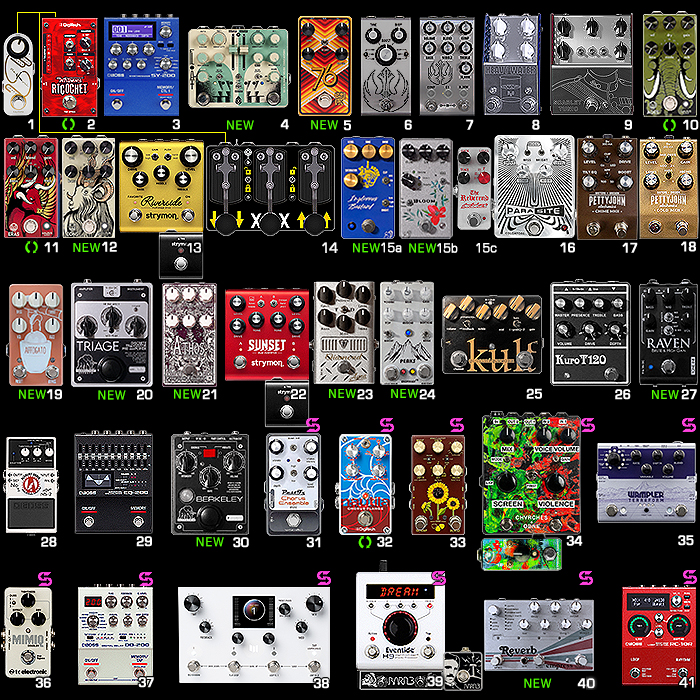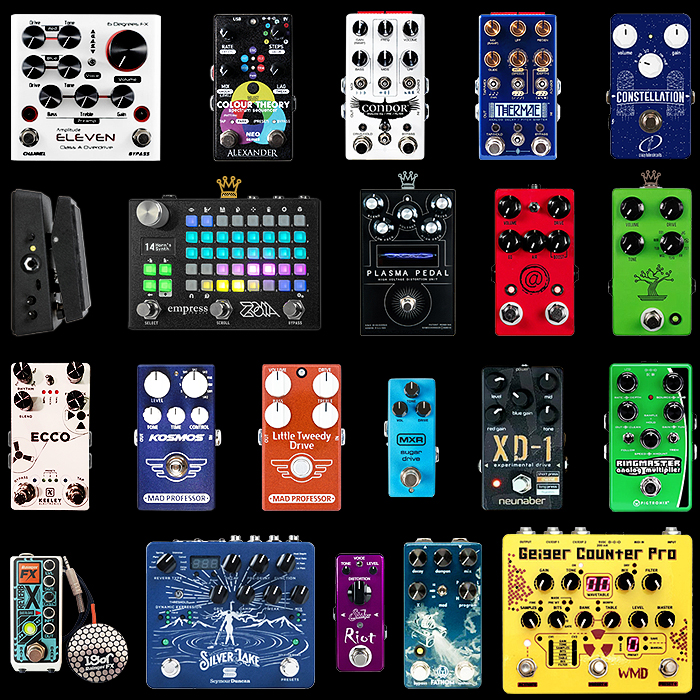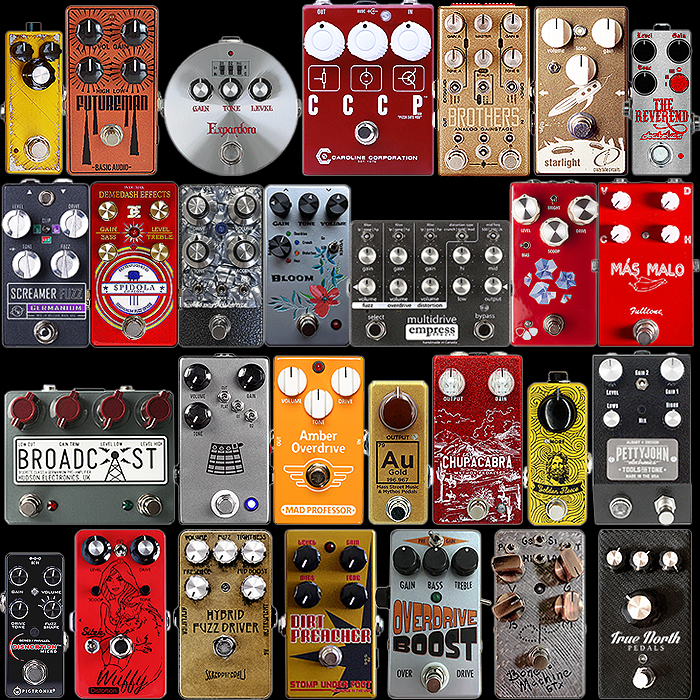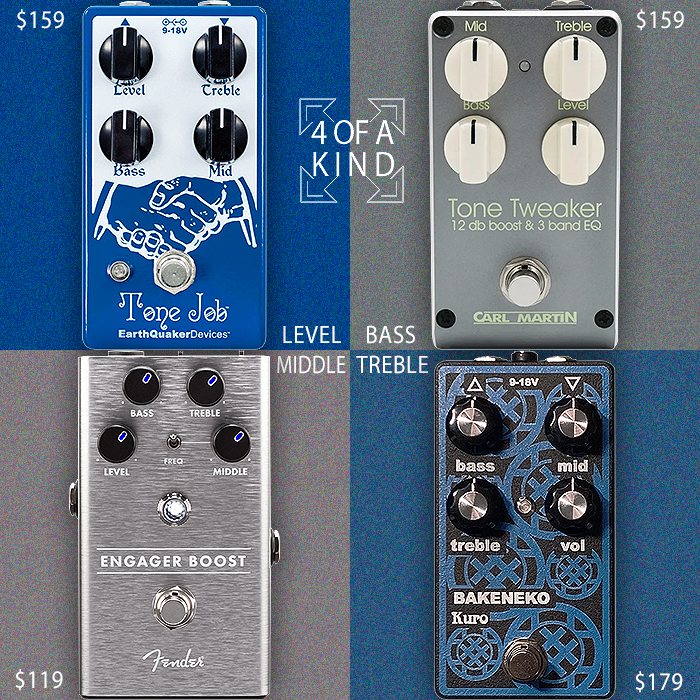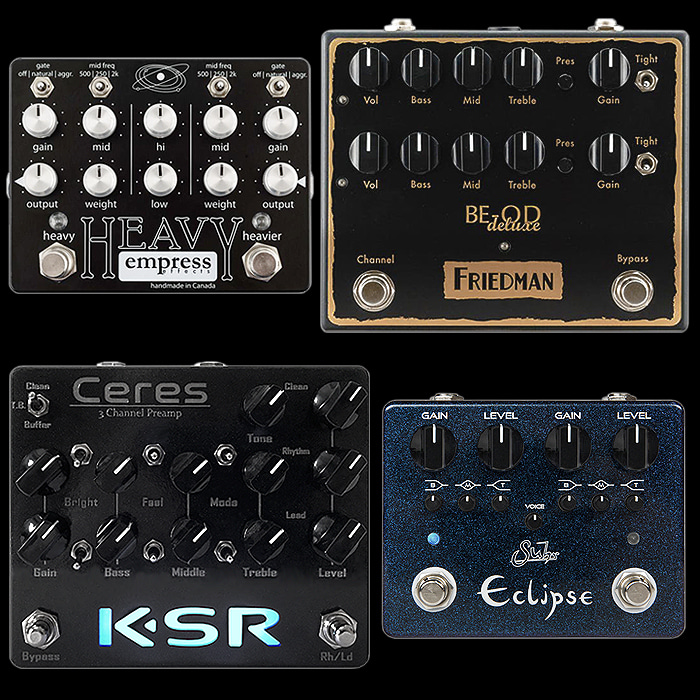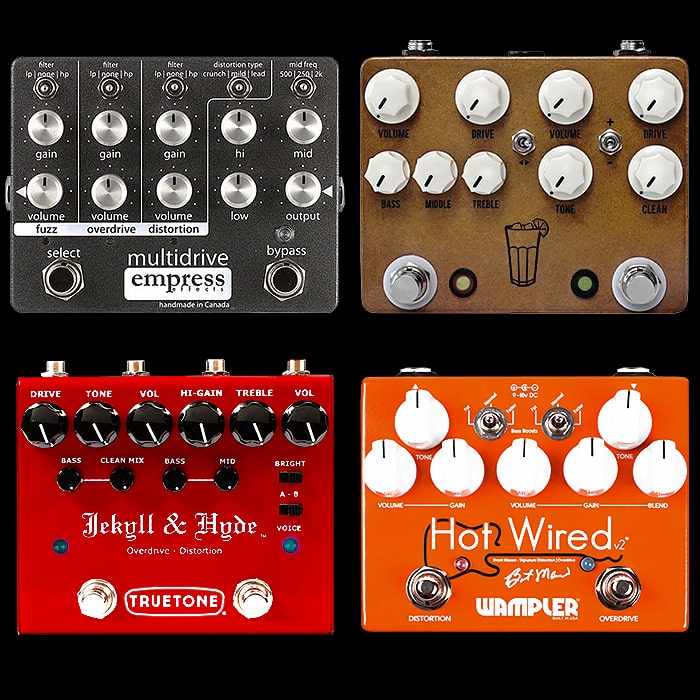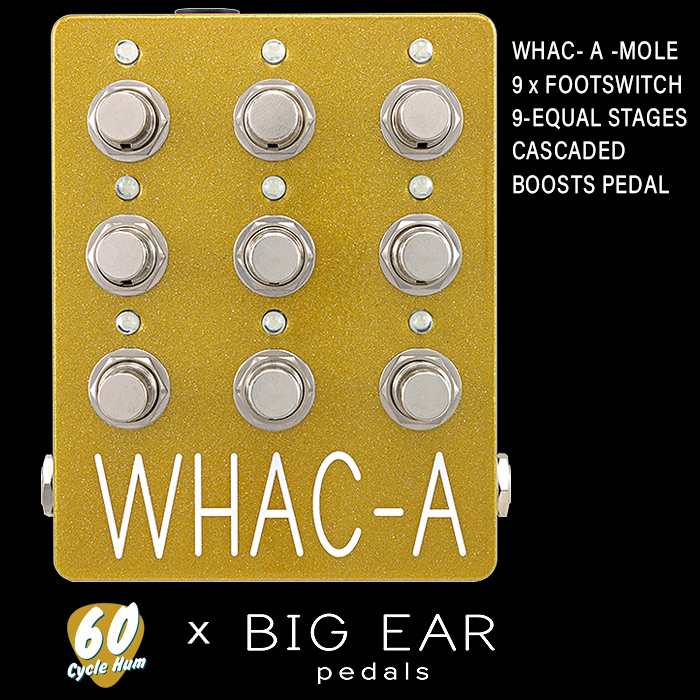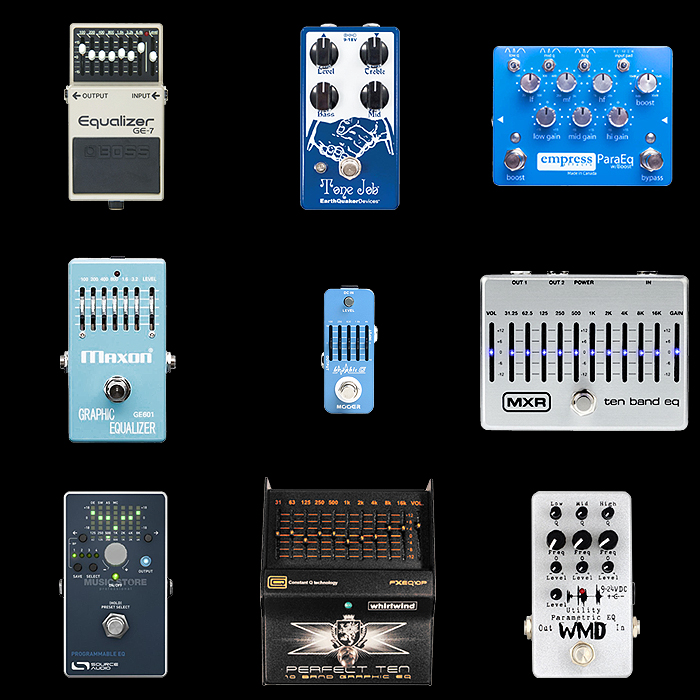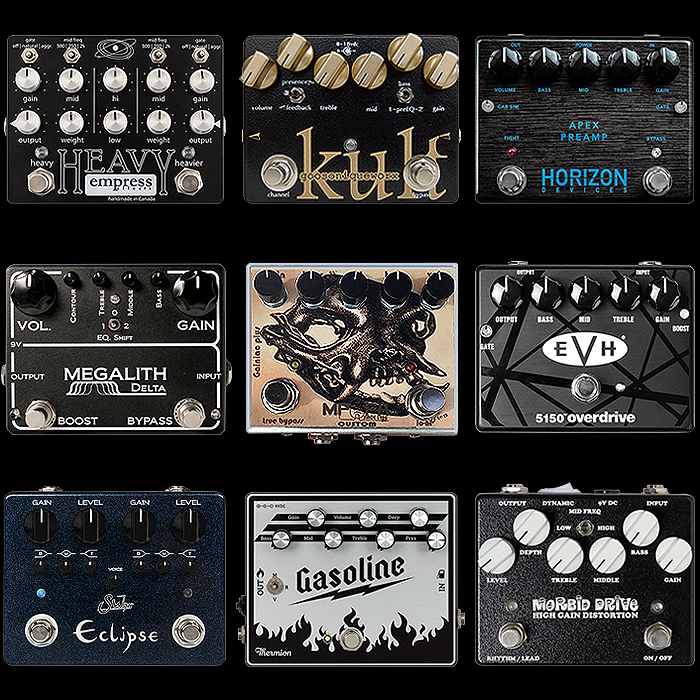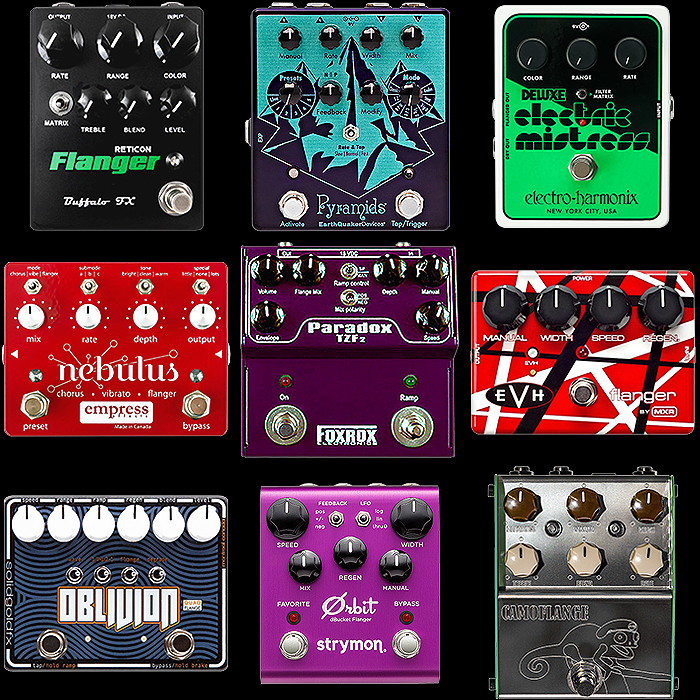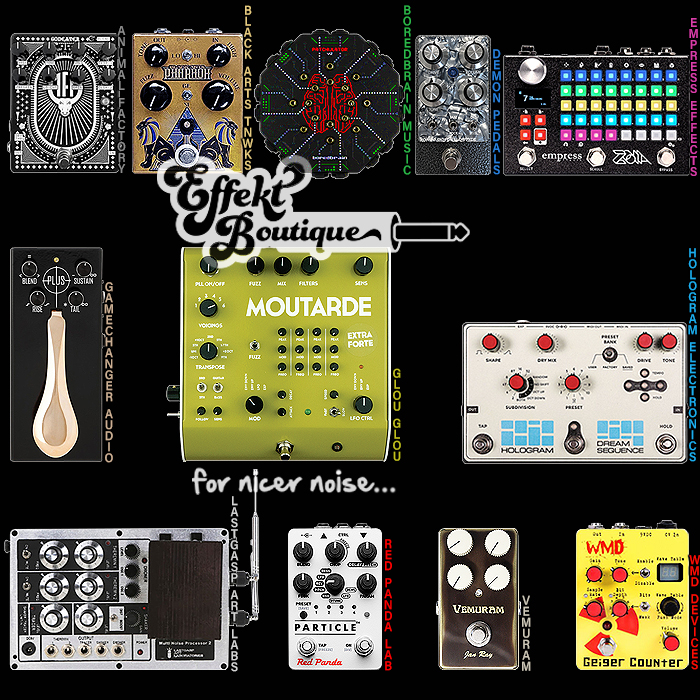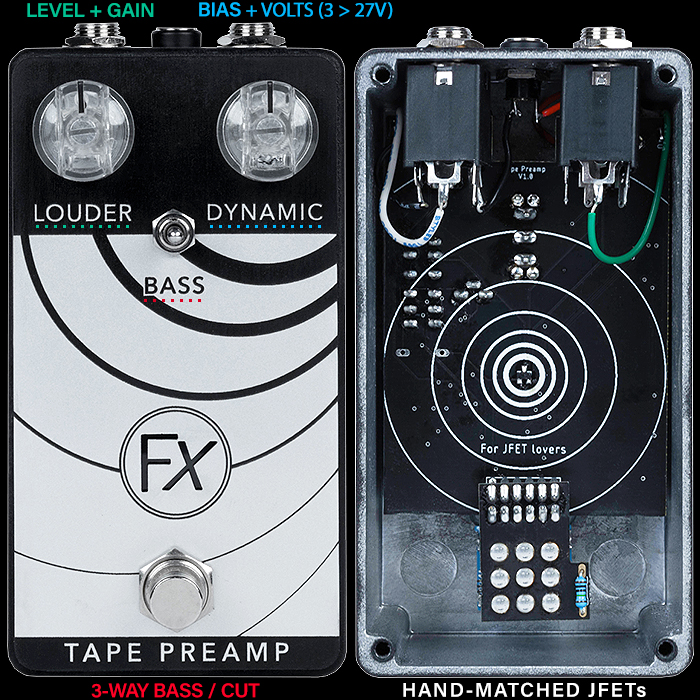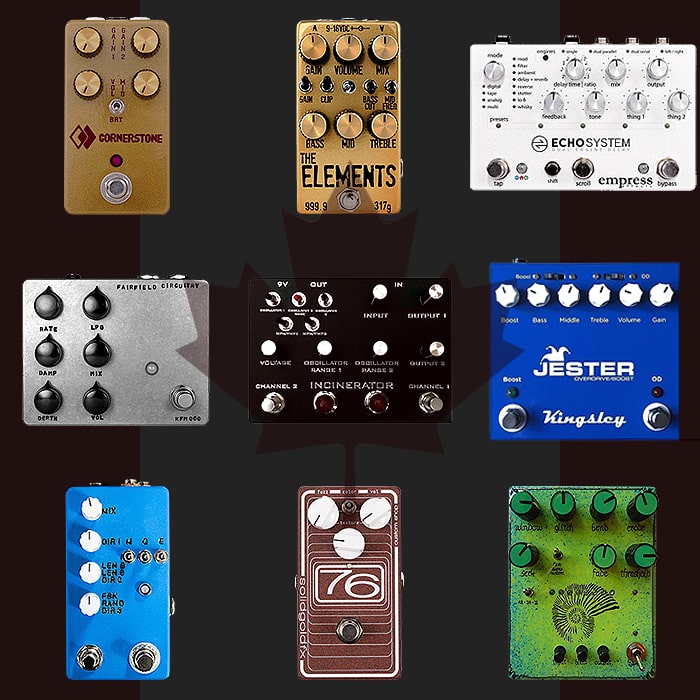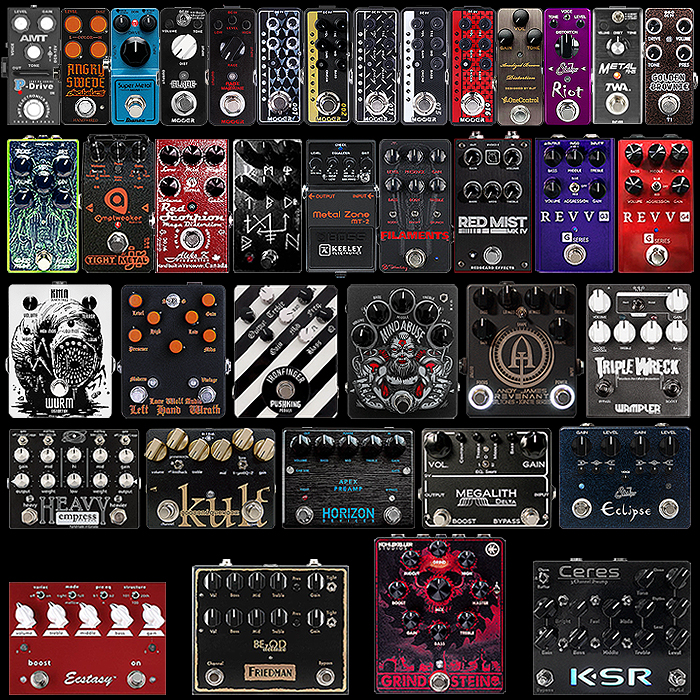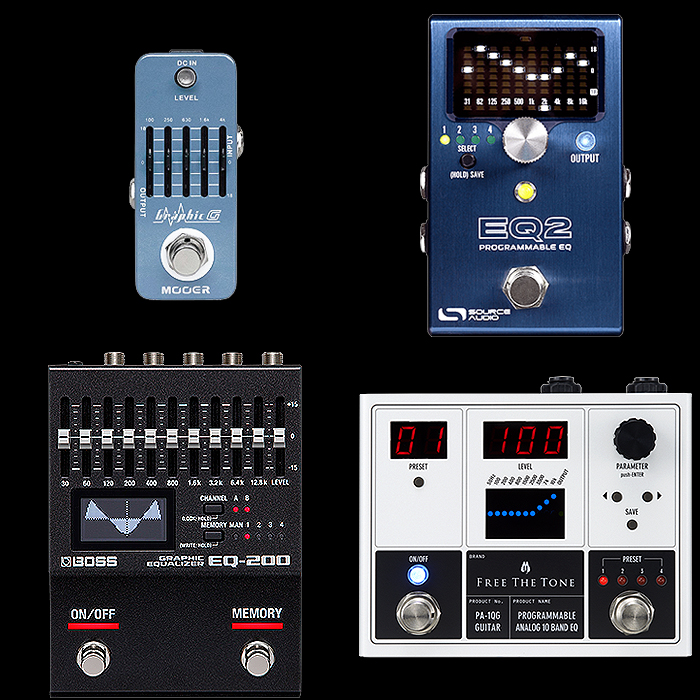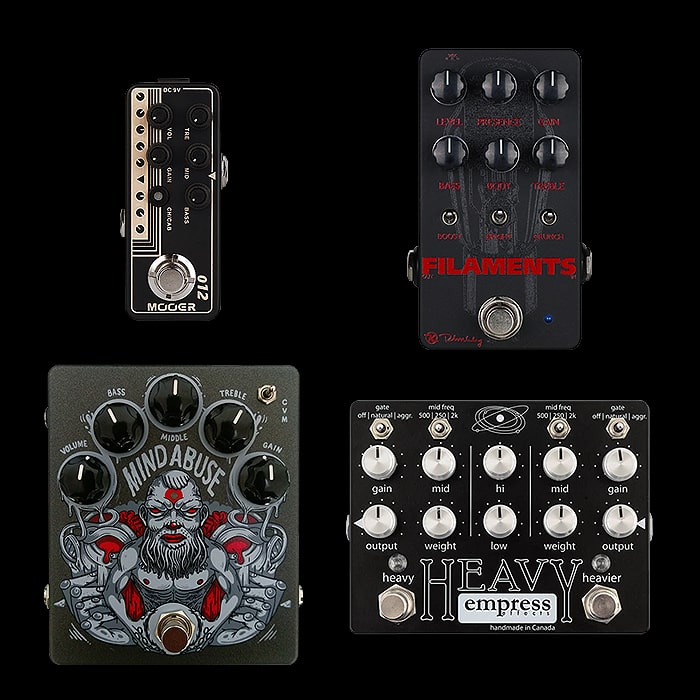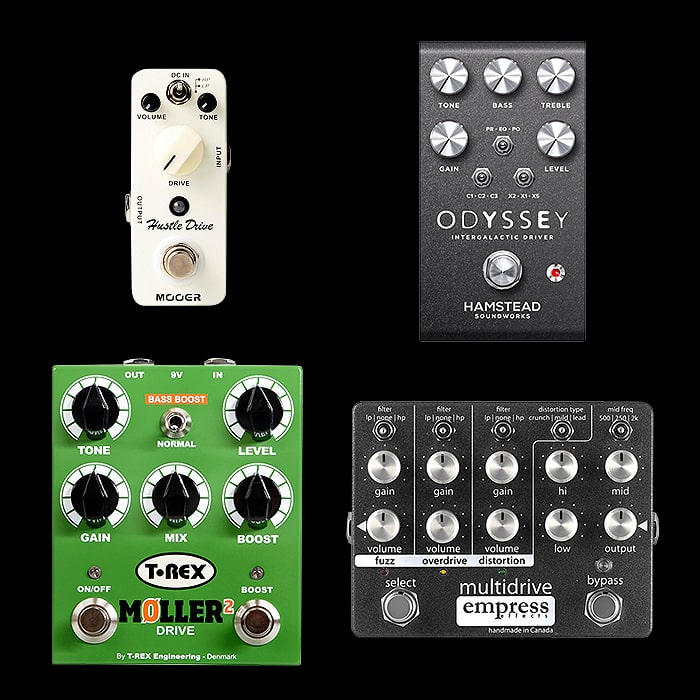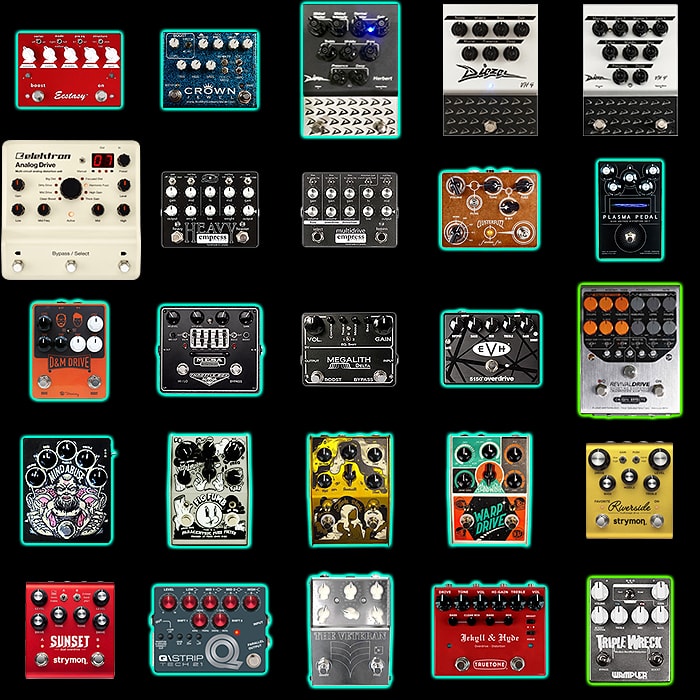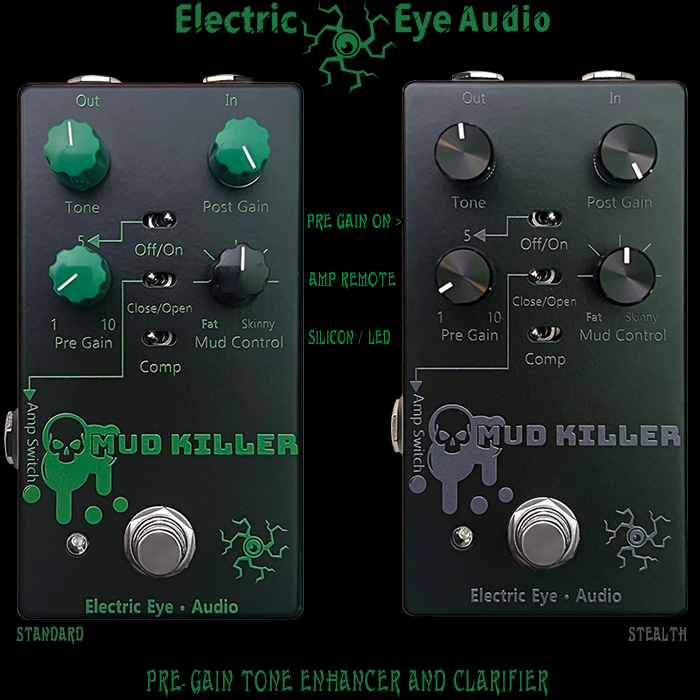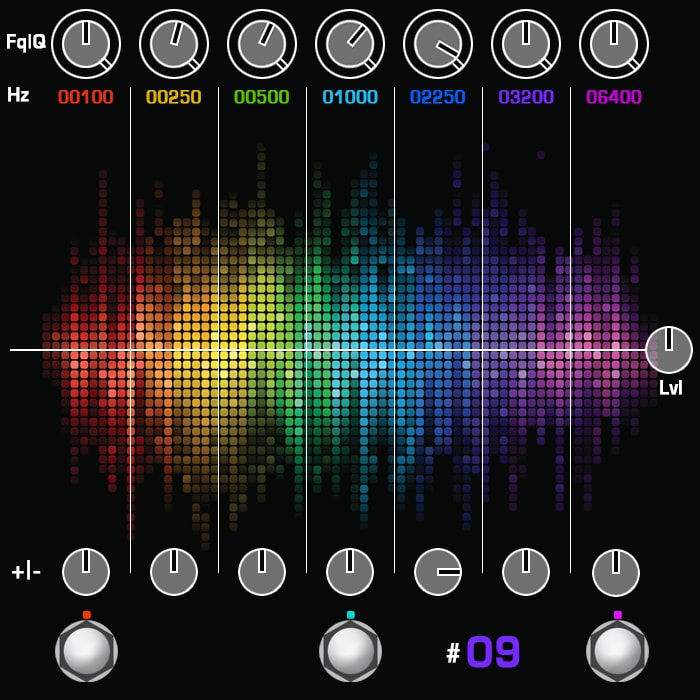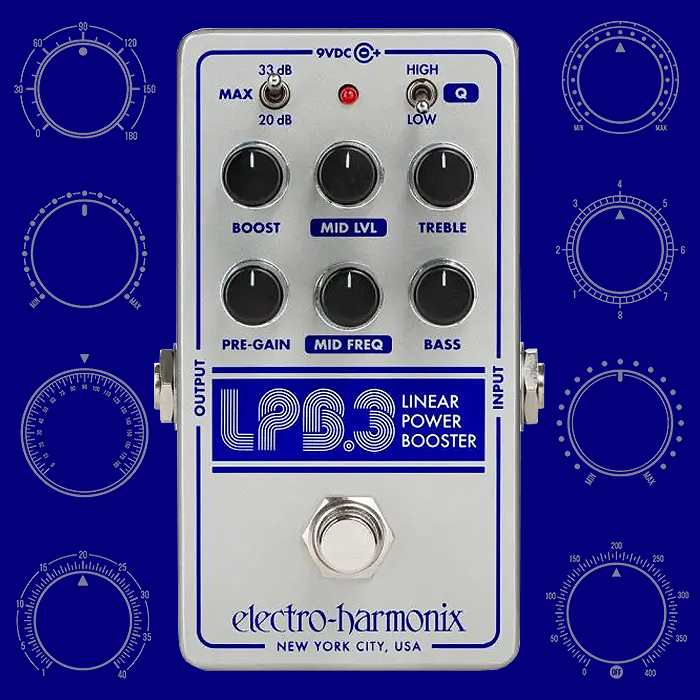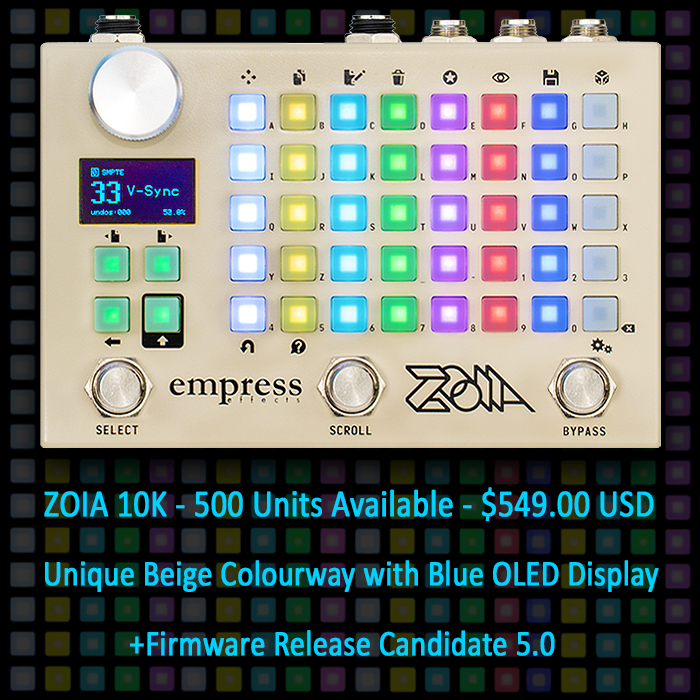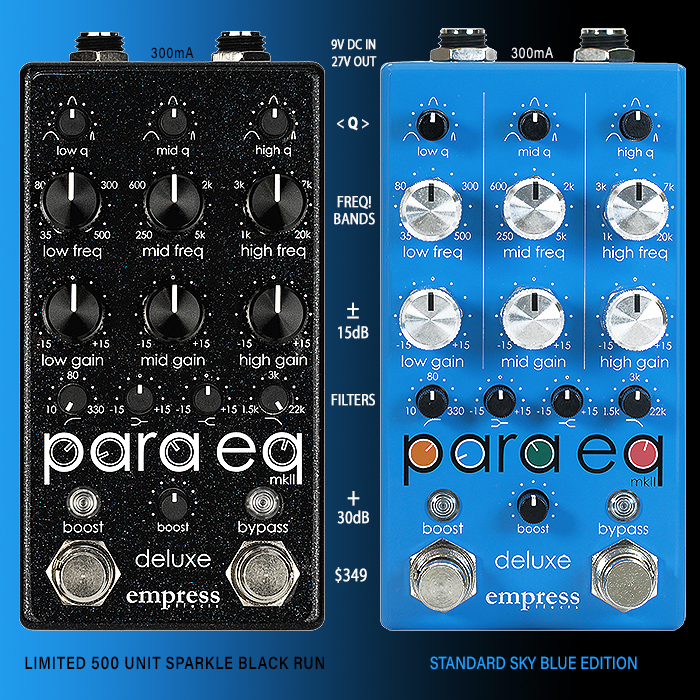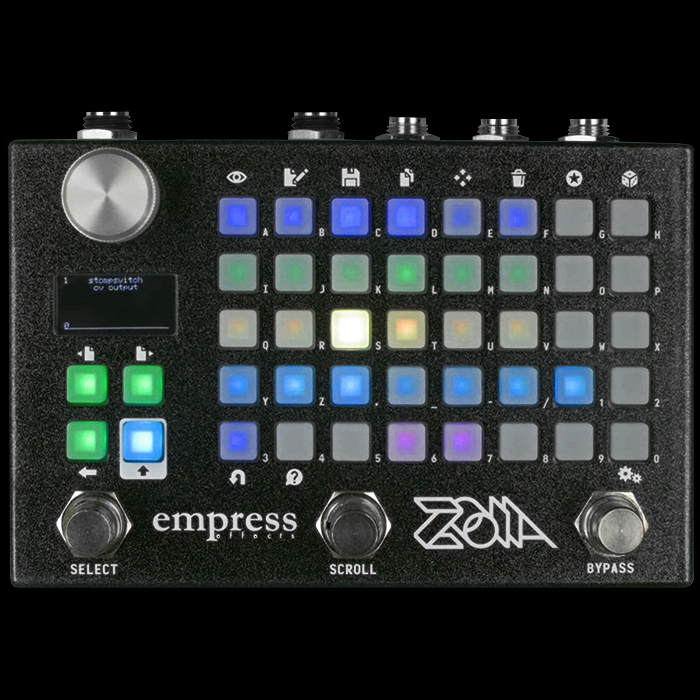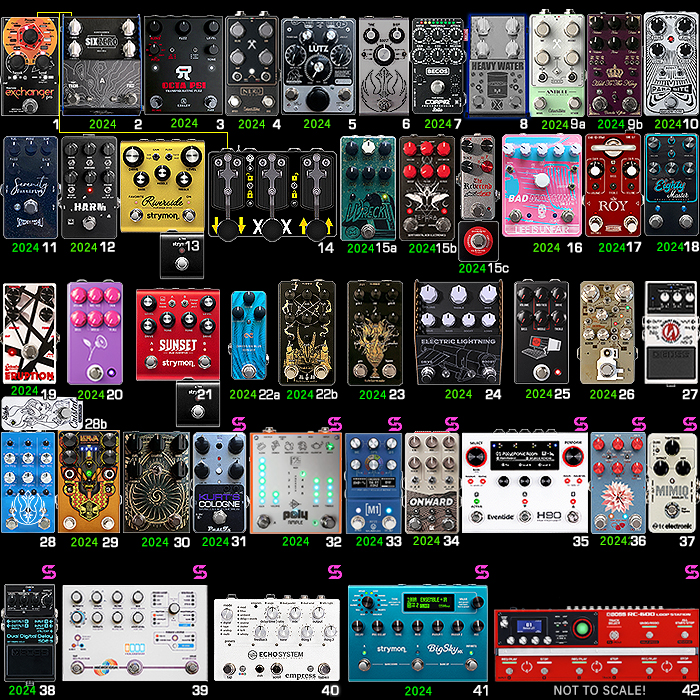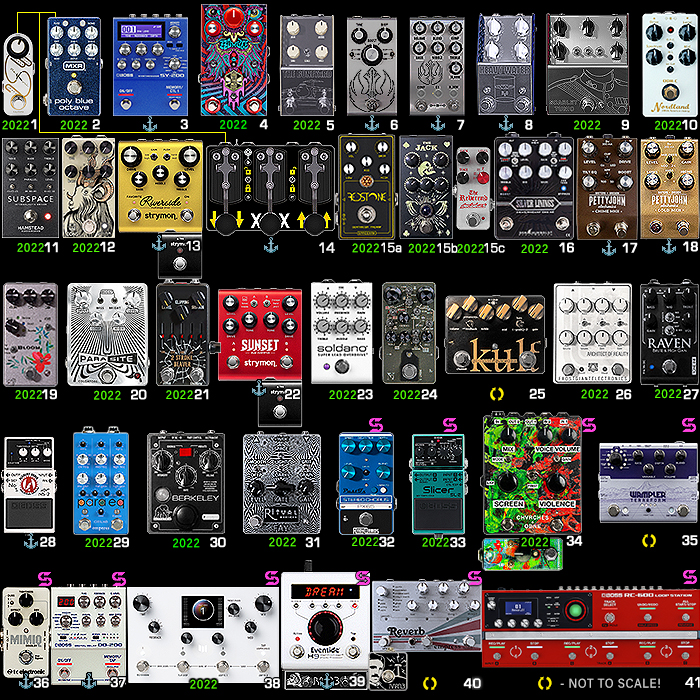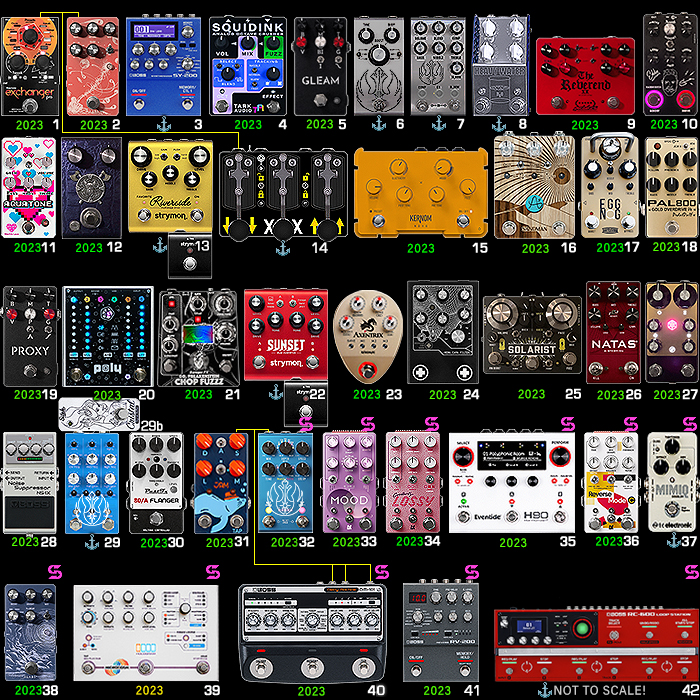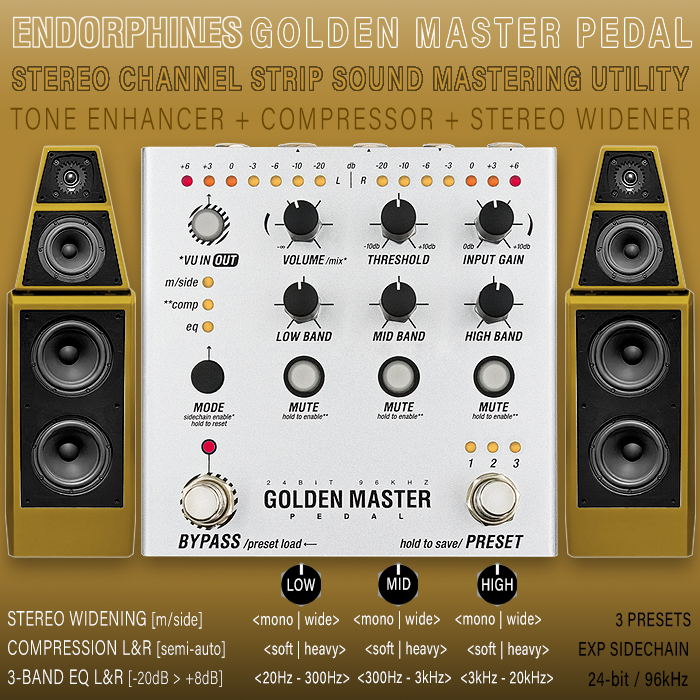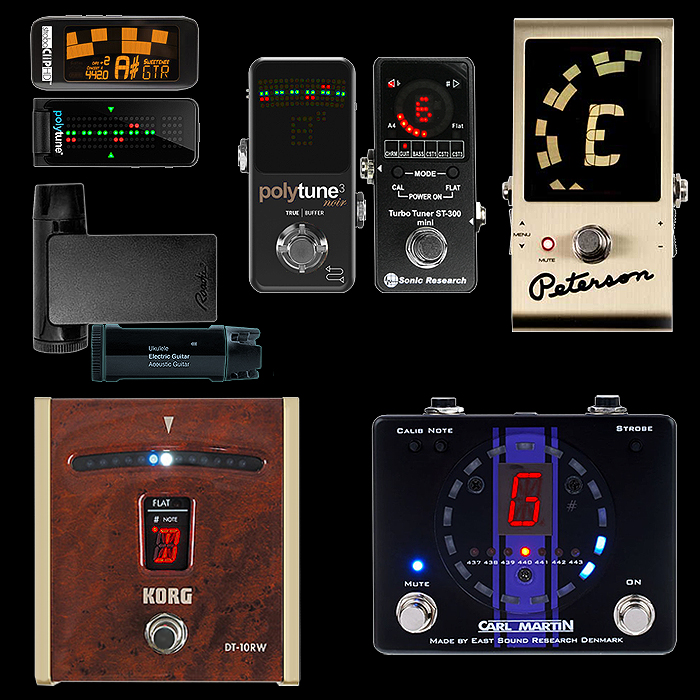Empress Effects shrinks and enhances its pro studio level fully transparent ParaEQ + Boost Parametric EQ which now comes in both Standard and evolved Deluxe Editions

The former and now discontinued BB-size Empress ParaEQ ($249) has long been held as the industry standard for studio quality Parametric EQ in pedal format - known for it’s pristine and precise EQ filtering and class-leading transparent / super-low noise-floor output with +30dB of Boost onboard too.
The pedal has been discontinued for a while as the nature of how the circuit was built and component-sourced, which was incurring ever higher build costs, meant that the unit became somewhat unviable in that format. At the same time, Empress was already in the process of improving and modernising its range - making certain pedals more pedalboard-friendly and more efficient to manufacture. The first proper example of that was the fairly recent MKII Compressor - which was also shrunken down from 1590BB-size to 1590N1 / 125B format with numerous enhancements made along the way.
Even though discontinued the older ParaEQ never lost its appeal, and prices were being significantly inflated for those new and mint units remaining. The one notable difference between old and new - is that the former ParaEQ had a 3-way Input Pad toggle-switch : 0 | -12 | -6, which allowed you to adjust the input level / gain. The new units have much higher internal headroom with more range - where voltage is internally increased to 27V - which means you no longer need to rely on an additional Input Pad switch.
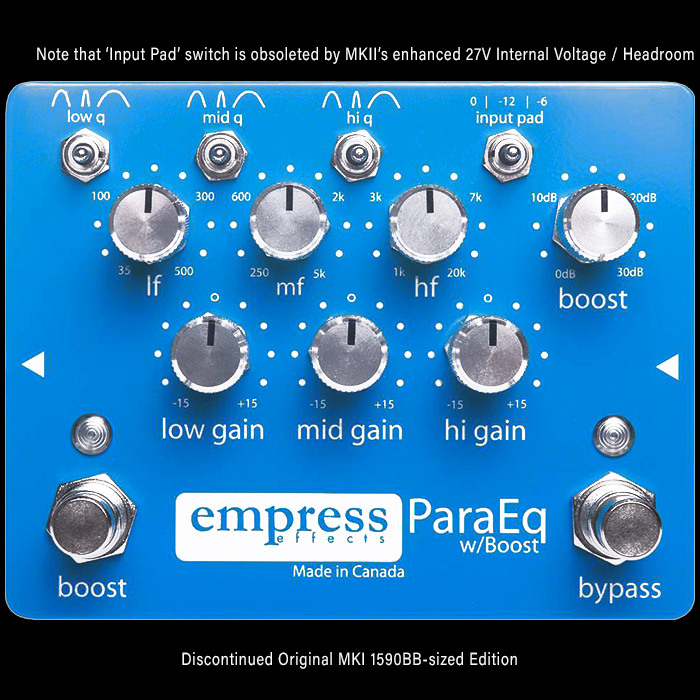
In the process of re-engineering the format to its smaller dimensions - numerous improvements and enhancements have been made. Where the MKII Standard Edition is pretty much an exact replacement for its larger predecessor - with all the same controls and qualities - bar of course the already mentioned former 'Input Pad' where the greatly extended and charge-pumped 27V internal Voltage / Headroom gives you all the extra range you need to cover every and any instrument's output.
The new MKII format is very much more pedalboard friendly as its output jacks are now top-mounted too. So you're getting a much better and more convenient unit with almost the exact same control topology - just smaller and of vertical orientation.
The MKII Deluxe Edition

Of course the version I have is the even more improved and enhanced Deluxe Edition which makes the Q-Bandwitch controls fully granularly sweepable via Mini Knobs - versus the 3-way toggle-switches of the MKI and MKII Standard.
The other significant change is the row of further filters under the main controls - which gives you a number of shelving EQ's in addition - first High Pass Filter, then 2 Mid-Band Shelving EQs, and finally a 4th Low Pass filter. Here you can even more finely shape and sculpt your output profile - where the most typical frequencies you need to target are the Lowest and Highest ones - to remove unwanted boominess and flub at the low end and attenuate over-bright / sharp / ice-picky frequencies at the top end in particular.
There are actually reasons for and against each of the Standard and Deluxe editions - the Standard is obviously simpler and easier to deploy - and is still incredibly powerful in that format with all the same core capabilities.
If you require fully surgical precision in tone-shaping and frequency sculpting - then the Deluxe edition is obviously your main choice.
The significant advantage of Parametric EQ vs multi-band and graphic EQ's is how much more finely you target specific frequencies / clusters with the addition of the Q-Bandwidth controls - which can also sharpen or smooth out the EQ as appropriate - to render far more organic and more natural sounding tones.
In operation the Empress ParaEQ is to all intents and purposes entirely 'noiseless' and fully transparent - you cannot hear any additional noise when it is applied - its 107.9dB Signal to Noise Ratio is simply supreme.
I use it on Principal Balancing EQ duties after the noisiest pedals and noise gate - where I mostly use the Boost as a kind of Solo Boost for certain pedals - while otherwise the ParaEQ is very much on Tone / Signal enhancing duties!
The Key Usage Scenarios for the MKII ParaEQ's
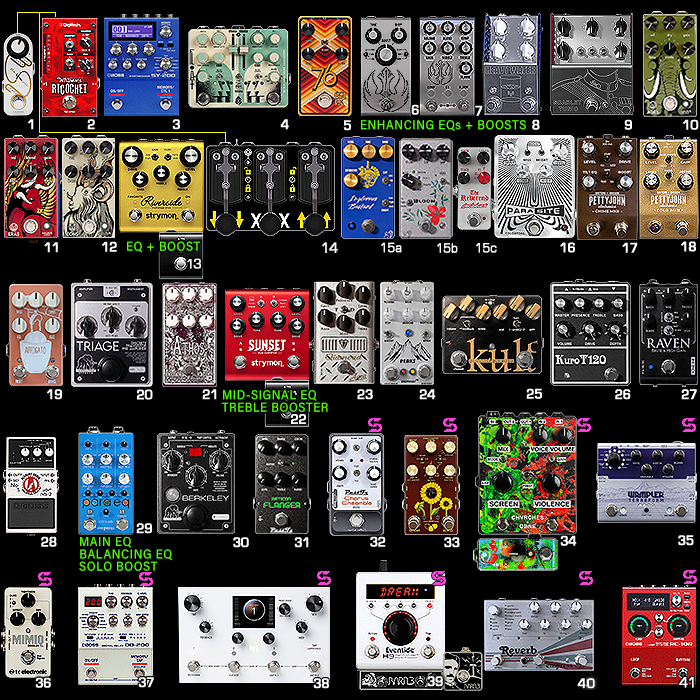
The above signal flow visual shows the 4 pedals in the signal-chain that I have on EQ and Boost duties - starting with the Tone-Enhancing Jackson Audio Prism and Bloom, then the pair of Strymon pedals what I mainly utilise as EQ / Boosts - the first Riverside one being 3-Band EQ, while the second Sunset one is principally used as a Treble Booster - but you can control how much Bass Frequency you let through. Then finally the ParaEQ as my Main Balancing EQ and Solo Boost!
In my previous features and articles on EQ's I've tended to split the application of EQ's into 3 sort of overlapping applications - where I also deploy my EQ's in 3 positions along my signal chain - at either end, pre and post gain pedals, as well as an additional placement in the middle - so I have the maximum range for applying an EQ before or after most of my core pedals.
I typically define the main uses as Tone-Shaping, Balancing EQ, and Tone-Sweetening - where there is a degree of overlap for each.
The principal role I use my main EQ for is actually as a post-gain 'Balancing EQ' - where I place it after my distortion pedals and noise gate - essentially to 'Balance' the core EQ profile of my signal - by mostly restoring attenuated higher frequencies which the signal-chain impedance has removed, and inevitably some frequencies removed by the noise gate too, as well as filtering out some of the potential low-end boom and flub. So typically my most powerful EQ sits towards the rear of the chain to ensure ultimate signal high-fidelity.
I also usually have a Tone-Sweetening EQ at the front of the chain (as part of a principally Boost pedal) - which sets up the core tonality of the signal right from the start. I tend to use mostly just one guitar - so I don't need to use an EQ to adapt my signal chain to different guitar or instrument inputs - and balance / adapt each of those to my core sound - which is another key facility for EQs.
Finally Tone-Shaping I describe as being more about enhancing and in fact often drastically changing the output of specific pedals - targeting inherent weaknesses in those pedals output profiles and onboard tone-stacks - so you can very significantly improve and enhance the range and output profiles of those pedals - for instance for making them better cut through the signal / band mix.
There are a few more usage scenarios for the ParaEQ - Eliminating Feedback and problem signal artefacts, and actually using the EQ's in combination with the Boost element - to drive the front end of your amp. So that the the ParaEQ can also impact the nature of the gain and feedback of your output - as well as the individual and more conventional frequency / cluster tone enhancements.
Soft vs Hard EQs
I've stated many times before that certain pedals' EQ's and Tone Stacks tend towards hard and dense - so not only are you targeting a specific frequency cluster - but you're often impacting on the nature and character of that EQ / output / frequency profile. I actually much prefer slightly softer EQ's - which is really all about Q-Bandwidth control - as the narrower that profile is - the harder and sharper the impacted frequencies become.
I've noted on a number of my pedals that I find their EQ's 'too hard' hitting and their nature of impact typically too dark and dense. Where enhanced Q-Bandwidth control allows you to significantly soften the impact of tone enhancement and make things generally sound more natural and more organic.
I've always preferred Active EQ's where you can properly target and fully boost and cut rather than just attenuate or filter out / diminish the core frequencies. Where the control can be both additive and subtractive. And with a good parametric EQ you hold sway over just how soft or hard your output is. Obviously if you're going for a more edgy industrial tonality then probably narrower / sharper / harder Q-bandwidth is preferable. While most of the time it's about being as natural and organic as possible - with of course the optimal blend of frequencies - just like your favourite wine or coffee blend has the ultimate mix of flavour characteristics - including mouth-feel and after-taste!
Meaning that EQ is also about feel and dynamics rather than just pristine and surgical frequency sculpting.
ParaEQ MKII Key Features and Specifications

STANDARD / CORE PARAEQ MKII
- 3 Core Filters
- Fully granular variable Low, Mid and High Frequency Boost and Cut enhancement
- 3-way Q-Bandwidth Control per Frequency Band - Medium | Narrow | Wide
- Internal Voltage increased to 27V for more Headroom and Range
- +30dB Boost
- Extremely transparent / low noise 107.9dB Signal to Noise Ratio
- Switchable EQ and / or Boost
- Pristine Studio Quality Output - with less than 0.03% distortion introduced when pedal is fully applied
- EQ suitable for any instrument output - from the most delicate of acoustic instruments to hard-hitting squelchy synths
- Top-Mounted Jacks
- Pedalboard-friendly Dimensions : 66mm x 121mm x 63mm | 2.6" x 4.8" x 2.5"
- Standard Boss-style 2.1mm 9V DC 9 [-] power supply needed with 300mA Current Draw
- Weight : 455g | 1lbs
- MAP / RRP : $274
DELUXE PARAEQ MKII
- 7 Core Filters
- Fully Granular / Sweepable Q-Bandwidth (Wide > Narrow) vs 3-way selector of Standard Edition
- Additional High-Pass and Low Pass 12dB/oct Filters
- Additional High and Low Shelving Filters
- MAP / RRP : $349
The Empress ParaEQ MKII Standard and Deluxe editions will be available for preorder from November 16th on the Empress Effects Webstore, and will ship out on December 12th.
Demos
Coming Soon!







